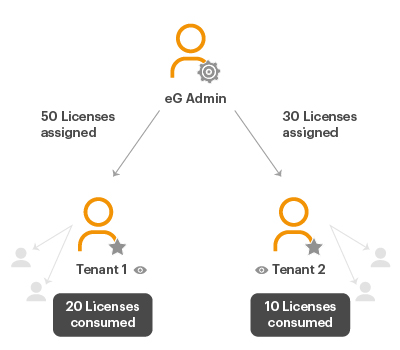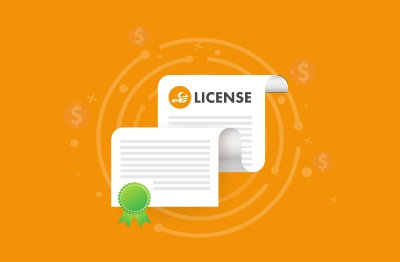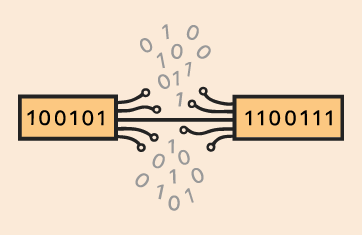IT monitoring tools are often complex to license and their licensing models are not always cost-effective. Today, I’ll cover some of the licensing models you may encounter as you evaluate IT monitoring tools. I will also highlight how eG Enterprise licensing makes it a cost-effective, affordable and flexible choice for our customers using our monitoring and observability platform.
Licensing of IT Monitoring Tools is Complex
Historically, IT monitoring tools have had complex licensing models. The licensing model can vary depending on what is being monitored:
- Per Node or Device Licensing: Some IT monitoring tools are licensed based on the number of devices, servers, or nodes being monitored. This is very common in network and infrastructure monitoring.
- Per Target Licensing: An extension of the previous model for simulation is to license by target being monitored by simulation – e.g., a HTTP URL being monitored.
- Per CPU or Core Licensing: For monitoring tools running on servers, especially in virtualized environments, licenses may be based on the number of CPU sockets or CPU cores. Many application performance monitoring (APM) and database monitoring tools have also been licensed by CPU/core. An obvious challenge with this model is that the licensing cost varies based on the size of the server that the application/database is hosted on.
- Memory-based Licensing: A variant of the above model is to license based on the memory configured on the server. Again, the larger the server memory, the higher the licensing cost.
- Per OS/Application Licensing: Many tools use different modules for monitoring different operating systems/applications. For example, monitoring of Microsoft Windows may be one cost, but there may be a different cost to monitor IBM AIX. In a similar manner, the licensing cost for Microsoft SQL server may be different than the cost for monitoring SAP applications.
- Per Application Instance Licensing: Another model common for APM tools is to use instance-based licensing. Often, multiple instances of an application may be hosted on the same OS (e.g., multiple Java application servers) and in this case, licensing is based on the total number of instances being monitored.
- Per VM or Per Hypervisor Licensing: When monitoring virtualized or cloud infrastructures, monitoring is licensed by the number of VMs or hypervisors monitored.
- Per User/Session Licensing: End user computing (EUC) environments such as Citrix virtual apps and desktops (CVAD), Omnissa Horizon, etc. are often licensed by users or sessions. Monitoring of these environments is licensed by some tools based on the number of users or number of sessions. Depending on the application being accessed and the configuration of the environment, one user may initiate multiple sessions – one for each application being accessed. In such a case, multiple session licenses may be required to monitor a single user session.
- Per Web Session Licensing: Real user monitoring (RUM) is a common way to monitor web applications. In this case, data from multiple user sessions is analyzed to report on the digital user experience (DEX). Licensing of RUM is often based on the number of total user sessions in an hour, in a day or in a month.
- Data Volume Licensing: Some tools charge based on the amount of data being ingested, processed or stored. This can be particularly relevant for log and event monitoring tools.
- Metrics-Based Licensing: This model charges you based on the actual usage of the tool, which could be measured by metrics collected (across all infrastructure components). Many cloud native tools use this model. You are charged per API call, per metric collected, etc.
- Per Simulation Licensing: When using synthetic monitoring tools that run robot users, it is common to charge per simulation. This type of testing is commonly used to test web service URL performance or VDI / DaaS login times.
The licensing model can also vary based on the functionality configured or provided in the monitoring console:
- Per User Licensing: Some tools license based on the number of users having access to or simultaneously accessing the monitoring tool’s console.
- Per Module Licensing: Alarm suppression, alarm escalation, root-cause diagnosis, trending, auto-baselining, SLA management, historical reporting, capacity analysis, right-sizing recommendations, etc. are all value-added capabilities in a monitoring tool. There is often a separate module and charge associated with each of these capabilities. Some products even charge per dashboard/report.
- Per Metric Threshold / Alert Licensing: This model is popular with native public cloud provider tools such as Azure Monitor and AWS CloudWatch. Charges are applied per metric and alert configured. This makes it very hard to estimate costs and often makes detailed monitoring prohibitively expensive.
How you license and pay for IT monitoring also varies from one vendor to another:
- Perpetual Licensing: You purchase a software license upfront with a one-time payment. You typically get a perpetual right to use the software version you purchased, although ongoing support and updates may require additional payments. Most IT monitoring vendors have moved away from a perpetual licensing model and only offer SaaS/subscription models.
- Subscription Licensing: You pay a recurring subscription fee for the right to use the software. This often includes access to updates, support, and sometimes additional features.
- SaaS Licensing: With the perpetual and subscription licensing models, you operate the management server in your infrastructure (on-prem or cloud) and are responsible for its upkeep, maintenance and operation, a SaaS option allows you web-based access to the management console, without taking on any of the hosting or maintenance responsibilities. The IT monitoring solution provider is responsible for operating and maintaining the software.
From the above discussion, you can see that licensing of IT monitoring is not straightforward. In many cases, it is hard to estimate the cost without doing an elaborate proof of concept (POC) to make sure you have an estimate of all the charges and that there are no hidden costs for add-ons, etc.
eG Enterprise Licensing for IT monitoring – An Easier Choice
At eG Innovations, we continually adapt our product licensing to make eG Enterprise simple to evaluate and adopt. Taking a customer-centric approach to licensing we have implemented some differential licensing features that add value to the customer experience.
Feature 1: Monitoring, Dashboards and Reporting are all Core Functionality
![]() The single console eG Manager includes monitoring, reporting and dashboards. Whatever you monitor you will have core functionality to troubleshoot and optimize your infrastructure and applications. No separate modules or consoles to get live and historical insights.
The single console eG Manager includes monitoring, reporting and dashboards. Whatever you monitor you will have core functionality to troubleshoot and optimize your infrastructure and applications. No separate modules or consoles to get live and historical insights.
Feature 2: Transferable Licensing
![]() eG Enterprise licenses are fully transferable between the 400+ technology stacks which we support to avoid shelfware. This is particularly important for organizations planning cloud migration or IT transformation projects. This means you can move licenses as you move users and application workloads to new platforms, clouds or infrastructures. We see this often in EUC use cases where customers may baseline an existing Citrix or RDSH deployment and migrate to Citrix Cloud or AVD running two parallel environments for a while. They can also baseline the original environment, monitor parallel environments and compare the new environment to evaluate success.
eG Enterprise licenses are fully transferable between the 400+ technology stacks which we support to avoid shelfware. This is particularly important for organizations planning cloud migration or IT transformation projects. This means you can move licenses as you move users and application workloads to new platforms, clouds or infrastructures. We see this often in EUC use cases where customers may baseline an existing Citrix or RDSH deployment and migrate to Citrix Cloud or AVD running two parallel environments for a while. They can also baseline the original environment, monitor parallel environments and compare the new environment to evaluate success.
License mobility is particularly important to those reliant on cloud services as it allows them to migrate between the best value offerings in the whole marketplace e.g., transfer their eG licenses to monitor Azure Managed SQL from Microsoft SQL Server on AWS or SQL Server on-prem.
Feature 3: Network Monitoring is Not Licensed Per Node or Device
![]() eG Enterprise licensing for network monitoring is not licensed per node or device but by agent (or poller). A customer can use a large server to monitor as many devices or nodes as possible without incurring additional costs or administration as their networking evolves.
eG Enterprise licensing for network monitoring is not licensed per node or device but by agent (or poller). A customer can use a large server to monitor as many devices or nodes as possible without incurring additional costs or administration as their networking evolves.
eG Enterprise supports a large range of networking technologies, see: End-to-End Monitoring: Applications, Cloud, Containers (eginnovations.com) and select “Sort by: Network and Hardware”.
Feature 4: Free AIOps capabilities – RCA, Trend Analysis and Auto-Baselining all Included
![]()
With eG Enterprise you get all our AIOps-powered platform features included, there are no additional license costs and you’ll for free:
- Machine learning baselining and anomaly detection, the system will learn what is normal for your systems and users
- Metric thresholds and alerting ready to go out-of-the-box, no pay per metric or alert and no tedious manual setup
- Event and alarm correlation to avoid alarm storms, true root-cause issues are prioritized over secondary effects
- Root-cause analysis and deep diagnostics, concerning symptoms automatically trigger additional diagnostic tests and root-cause analysis pinpoints the cause of issues to administrators
- Capacity and trend analysis tools and reporting are included to allow long term planning and cost-optimizations
Pay per metric / alert models within AWS CloudWatch and Azure Monitor make it incredibly difficult to estimate costs and many users receive unexpected and unwelcome bills, see these articles, which both include a section on estimating monitoring costs: Using CloudWatch Agent for Detailed Monitoring of AWS EC2 Instances and Estimating Azure Monitor Cost for AVD Monitoring.
Feature 5: External Monitoring – No Limit on URLs Per Agent
![]() Similar to network monitoring, there is no limit on the number of web site URLs tested per agent and licensing is based on the hardware provided to perform the testing. This means you can test all your web sites and services without incurring additional costs or rationing testing.
Similar to network monitoring, there is no limit on the number of web site URLs tested per agent and licensing is based on the hardware provided to perform the testing. This means you can test all your web sites and services without incurring additional costs or rationing testing.
In a similar way, with eG Enterprise you can perform as many simulations/tests from as many locations as you require with licensing per test location. This is particularly cost effective in EUC like use cases, for example when testing whether Citrix or VMware user logon times synthetically repeatedly throughout the day. The same model is also applicable thick client/thin client simulation and web client session simulation as well.
Feature 6: Virtualization – Inside and Out Views at One Cost
![]() If you are running virtual machines (VMs) on virtualized infrastructure, you’re probably already aware that metrics like CPU ready time, balloon memory, IOPS, etc. are important indicators of how the virtual infrastructure is performing. These metrics together provide what we refer to as the “outside view” of a virtual machine. The virtualization platforms – whether VMware vSphere / ESXi, Citrix XenServer, or Microsoft Hyper-V – provide metrics that can be used to construct this outside view of a virtual machine (VM).
If you are running virtual machines (VMs) on virtualized infrastructure, you’re probably already aware that metrics like CPU ready time, balloon memory, IOPS, etc. are important indicators of how the virtual infrastructure is performing. These metrics together provide what we refer to as the “outside view” of a virtual machine. The virtualization platforms – whether VMware vSphere / ESXi, Citrix XenServer, or Microsoft Hyper-V – provide metrics that can be used to construct this outside view of a virtual machine (VM).
For insights into user experience, application and process performance though, an inside view of the VM is needed, usually obtained via a lightweight domain specific agent. eG Enterprise provides the inside and outside view of VMs using the same agent. This makes the licensing very simple – a single monitoring license is required per physical machine and is sufficient to monitor all the VMs – both from the outside and from the inside.
For more details, see: 360 Degree Visibility of Virtual Machines – Inside and Outside (eginnovations.com).
Feature 7: Flexible Licensing for Digital Workspace Monitoring (User/Server Licensing)
![]() Flexibility to choose between named user, concurrent user and server-based licensing in Digital Workspace environments. Whatever suits your use-case or business case best for digital workspace technologies including Amazon WorkSpaces, Microsoft AVD / M365 Cloud PC and RDSH, Citrix and VMware.
Flexibility to choose between named user, concurrent user and server-based licensing in Digital Workspace environments. Whatever suits your use-case or business case best for digital workspace technologies including Amazon WorkSpaces, Microsoft AVD / M365 Cloud PC and RDSH, Citrix and VMware.
Concurrent user licensing is particularly well suited to 24×7 organizations and those with shift workers such as call centers or healthcare facilities. Customers generally license app delivery products such as Citrix XenApp by server host or by concurrent user (that’s real active users not the list in your Active Directory).
eG Enterprise licensing avoids per user session licensing, as it is impossible to estimate how many licenses a user accessing published apps via will consume, delivery controllers consume additional licenses and often disconnected sessions will. It’s a particularly problematic model for MSPs (Managed Service Providers) and one we very much intend to continue to avoid. No surprises, and a named or concurrent user may have as many active sessions as needed. We only count the named/concurrent user.
Feature 8 – Console Access for Any Role
![]() Using RBAC (Role Based Access Control) eG Enterprise can be provisioned for unlimited users – from admins to product owners to helpdesk operators to CIOs. Spread the added value of the insights throughout your organization, without requiring any licenses for users accessing the eG web-based console.
Using RBAC (Role Based Access Control) eG Enterprise can be provisioned for unlimited users – from admins to product owners to helpdesk operators to CIOs. Spread the added value of the insights throughout your organization, without requiring any licenses for users accessing the eG web-based console.
Beyond this dashboard and report publishing features allow insights to be shared with others beyond console access.
Read more about how RBAC can help you provide secure access to insights for your whole organization: Role-Based Access Control in eG Enterprise.
Feature 9 – No Ingest and Process or Data Retention Licensing
![]() Don’t hold back on your data collection. We don’t license or bill on data volumes ingested or processed. You will need to support a large enough database and storage for your needs but there are no hidden costs. “Ingest and process” licensing models can be particularly expensive for those looking to do tracing or log monitoring and analysis.
Don’t hold back on your data collection. We don’t license or bill on data volumes ingested or processed. You will need to support a large enough database and storage for your needs but there are no hidden costs. “Ingest and process” licensing models can be particularly expensive for those looking to do tracing or log monitoring and analysis.
Feature 10 – No Per App or Per Application Server Licensing for Cost Effective APM
![]() For example: For Java applications, eG Enterprise licensing is priced per operating system, on which the JVMs are running. If your operating system has three JVMs running on it, then you are charged for the single operating system. This makes eG Enterprise a more cost effective APM (Application Performance Monitoring) solution than many other options.
For example: For Java applications, eG Enterprise licensing is priced per operating system, on which the JVMs are running. If your operating system has three JVMs running on it, then you are charged for the single operating system. This makes eG Enterprise a more cost effective APM (Application Performance Monitoring) solution than many other options.
For APM we don’t count and charge on number of hits, sessions, metrics, logs and log events, ingested data, or similar.
eG Enterprise’s MSP Friendly Licensing for Monitoring
 eG Enterprise’s secure multi-tenant architecture makes it a popular choice for MSP Monitoring. Beyond numerous MSP dedicated features, we have a licensing program designed to suit our MSP customers’ business and revenue models.
eG Enterprise’s secure multi-tenant architecture makes it a popular choice for MSP Monitoring. Beyond numerous MSP dedicated features, we have a licensing program designed to suit our MSP customers’ business and revenue models.
Licensing Features for MSPs
- Pay-as-you-go licensing (server/user-based) including monthly billing options
- Tenant self-service licensing. The MSP admin can assign licenses to tenants for monitoring their systems, applications, and so on. Tenants then have a right to further distribute licenses across business units as required. License reporting is also enabled at the tenant-level allowing tenants to proactively plan and manage their own license usage.
To learn more on eG Innovations MSP features and our MSP partner program, see: Multi-Tenant MSP Monitoring | eG Innovations.
eG Enterprise is an Observability solution for Modern IT. Monitor digital workspaces,
web applications, SaaS services, cloud and containers from a single pane of glass.
Learn more
- For further information on eG Enterprise pricing, please see: IT Monitoring Pricing | eG Innovations (there is a useful FAQ at the bottom of this page).
- For details on eG Enterprise Licensing, please see: An Introduction to eG Enterprise and use the left-hand menu to navigate. Common questions are answered in our: Licensing FAQ (eginnovations.com).



 Raja Kannan is Head of Technology Services at eG Innovations. Raja’s experience is in End-User Computing, Infrastructure Monitoring, and Application Performance Monitoring (APM).
Raja Kannan is Head of Technology Services at eG Innovations. Raja’s experience is in End-User Computing, Infrastructure Monitoring, and Application Performance Monitoring (APM). 


